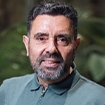German precision in the application of inputs: GeoPard outlines a strategy to grow in Brazil
With the eye of computer vision, Australian Bitwise uses technology to analyze videos and estimate crop productivity
Abril 14, 2022
By Victor Lima*
Precision agriculture has increasingly attracted the attention of large industries dedicated to crop protection in the name of productivity gains without increasing the planted area. With the technology of the German agtech GeoPard , the visualization of the fields takes the form of colorful, three-dimensional maps that integrate different types of information.
In 2022, agtech, which is already present in 35 countries on 4 continents, aims to strengthen its presence in Brazil and invest in the development of new technologies. GeoPard is preparing for a Series A funding and hopes to bring, in addition to investors, partners specialized in its core business, precision agriculture. GeoPard serves any agricultural crops and also provides services for the forestry sector.
Condensing data from satellite imagery with over 30 years of records, crop terrain topography and soil chemical analyses onto its cloud platform, GeoPard describes its solution as “integrating different layers of data into perfect maps.” , in the words of Dmitry Dementiev, CEO and co-founder of GeoPard.

Application zones can be configured directly on the computer with the type of input applied, quantity and price per hectare (Image: Geopard)
According to him, GeoPard's large client industries have already seen average reductions of up to 10% in the use of seeds and up to 40% in costs with the application of pesticides. Herbicides are the products that most gain efficiency with the best application, with a drop of up to 70% in the costs of weed combatants in the field compared to generalized application methods traditionally used in the field.
“We want to offer precision agriculture in an easy way. The customer just needs to draw the boundaries of their land on the platform and then, automatically, we provide the history of the area and productive potential based on data integration”, explains Dementiev.
Future vision
The evaluation of the results of the application of precision agriculture, due to the high costs involved, must be done based on the return on investment, and it is at this point that Brazil gains strategic attention from the Germans.

Dmitry Dementiev, CEO of GeoPard
Future vision
The evaluation of the results of the application of precision agriculture, due to the high costs involved, must be done based on the return on investment, and it is at this point that Brazil gains strategic attention from the Germans.
“The basis for evaluating the results is the return on investment (ROI) and Brazil presents very positive responses in these terms, mainly due to the two harvests per year and the high productivity of the crops”, says Dementiev.
In the pipeline of strategic actions for 2022, the raising of a new round of investments is scheduled for the coming months. The expectation is to lift €5 million (approximately R$25 million) for two main objectives: evolving the business model and developing new features and functionality for the platform.
Today, agtech provides its technology to the market in three ways: via API, widgets and white label. In the first case (API), the client connects the solution to any system, platform or service on which it already operates. In the second (widgets), it gains a shortcut to the tool with an interface for direct visualization by the user. In the third (white label), it uses the platform as if it were the contracting company itself, which maintains its visual identity and at the same time does not need to develop anything internally.

GeoPard and My John Deere technology working together for data analysis (Photo: Real Agriculture)
In the line of accelerating the development of new functionalities for its platform, GeoPard is also looking for new partners. So far, it has built relationships with American company Corteva Agriscience, which makes pesticides and seeds, and machinery giant John Deere. The latter led to the startup's system integration with My John Deere, its online farm management and precision farming platform.
The goal now is to include new modules aimed at analyzing carbon in crops, controlled application of nitrogen and calculation of sustainability indicators.
data overlay
Currently, the calculation of field productivity potential is one of the main features offered by agtech to its users. From the superposition of layers of different agronomic information related to crop productivity — such as soil, climate, area history, topography and terrain slope — it is possible to obtain a complete view of the details of each square meter of the field, optimizing the use of the land.
The search for maximum productivity is always accompanied by the search for maximum economic performance and long-term soil sustainability. “In many cases, it is more interesting and economically viable to plant less. This is due to the lower potential points of the land, which only increase input costs”, reiterates Dementiev.
In addition to the integrated visualization of information, the German startup also aims to move towards prediction and prescription agriculture. Today, it is already possible to program prescriptive maps with applications for varying rates of inputs, such as fertilizers and herbicides, based on the needs of each portion of land in the crop.
The solution was created for a user profile specialist in precision agriculture, such as agronomists for large companies or independent farm technicians. Anyway, the simple and intuitive interface is one of the bets for the expansion of technology.
* Edited by Marina Salles
Contatos







